Value & Accumulation
Why is a highly-utilized piece of land considered “worthless”? Why does UC feel entitled to control it?

Everything in US history is about the land—who oversaw and cultivated it…who invaded and stole it; how it became a commodity (“real estate”) broken into pieces to be bought and sold on the market.
Due to community pressure, the university has significantly revised their housing plans and provided basic social services to people at the park.
While these are an excellent resource, offering concessions are not the same thing as creating space for autonomy and self-determination—what the park has been about since the beginning.
The university has 750+ acres of land, an endowment of over $4.6 billion. UC Berkeley has enough land and resources to provide for everyone’s basic needs.
We encourage UC to sustain their existing basic services, and offer all the abundant resources of the institution to poor-people led groups and movements. They must also acknowledge the wealth of wisdom and knowledge that poor people have to offer in solutions to the many crises caused by capitalism.
Land is Money
In a regime where “value” is tied to money and profit, spaces run by and for poor people are considered “worthless.”
Justin Herman, head of the San Francisco Redevelopment Agency from 1959 to 1971, is best remembered as the architect of a displacement which James Baldwin famously called “Negro Removal.” He remarked about a site in the South of Market area:
This land is too valuable to permit poor people to park on it.
In 2021, UCB chancellor Carol Christ uses the same logic: “We must choose between meeting the needs of 1,000 students, and the needs of the 45-50 people who have historically used the park on a daily basis.”
The choice seems clear: put the land to a “more valuable” use!
First of all, the chancellor’s numbers are a blatant lie. Hundreds of people use People’s Park every day, many of them students.
But more importantly, is to remember unused or under-utilized land on and off campus where affordable housing could be built, such as the Chancellor’s Mansion. Why aren’t they building there?
Sites which could have been used for housing have instead been slated for projects such as athletic facilities and office buildings — some of which are leased to private sector companies. The university has long neglected housing construction for its growing student body, including by making an agreement with wealthy Elmwood neighbors not to increase population density at the Clark Kerr dormitories. People’s Park should not foot the bill for these land use decisions.
Please join us in supporting the park’s 53-year tradition of user development.
Self-Determination Now!
For 52 years, People’s Park has been a radical experiment in a total alternative to the top-down planning practiced by the university and city: development of the land by those who use it.
This concept of “user development” is essential to the park’s identity, and was cited as one of the main reasons it is now listed in the National Register of Historic Places.
Private Property is a settler colonial lie!

No sweeps, no evictions!
California is waging one of the most aggressive wars on the poor anywhere in the world. This criminalization of poverty has led to the huge expansion of prisons and policing, tacitly endorsed by the university.
On their own webpage titled “Supporting the Unhoused,” UC Berkeley states: “Camping in the park is illegal. We have successfully enforced this camping ban for 50 years … We will eventually resume enforcing the law against camping in the park.”
These forms of banishment are indicative of a deeper story about segregation, displacement, and criminalization. Make no mistake: destruction of People’s Park will entail the permanent removal of a key city center for people who are majority poor, no or low income, majority Black, and we cannot accept it.
Ready to stop it?
Text “SAVETHEPARK” to 41372 now! This is the emergency-only “Bulldozer Alarm” text list. We must come together to stop this violent process.
Further Reading
- POOR Magazine
- People’s Park: Still Blooming ed. Terri Compost
- In the Shadow of the Ivory Tower: How Universities Are Plundering Our Cities by Davarian L. Baldwin
Additonal Sources
This article is an editorial analysis and is not intended to represent the views of People’s Park communities as a whole.
